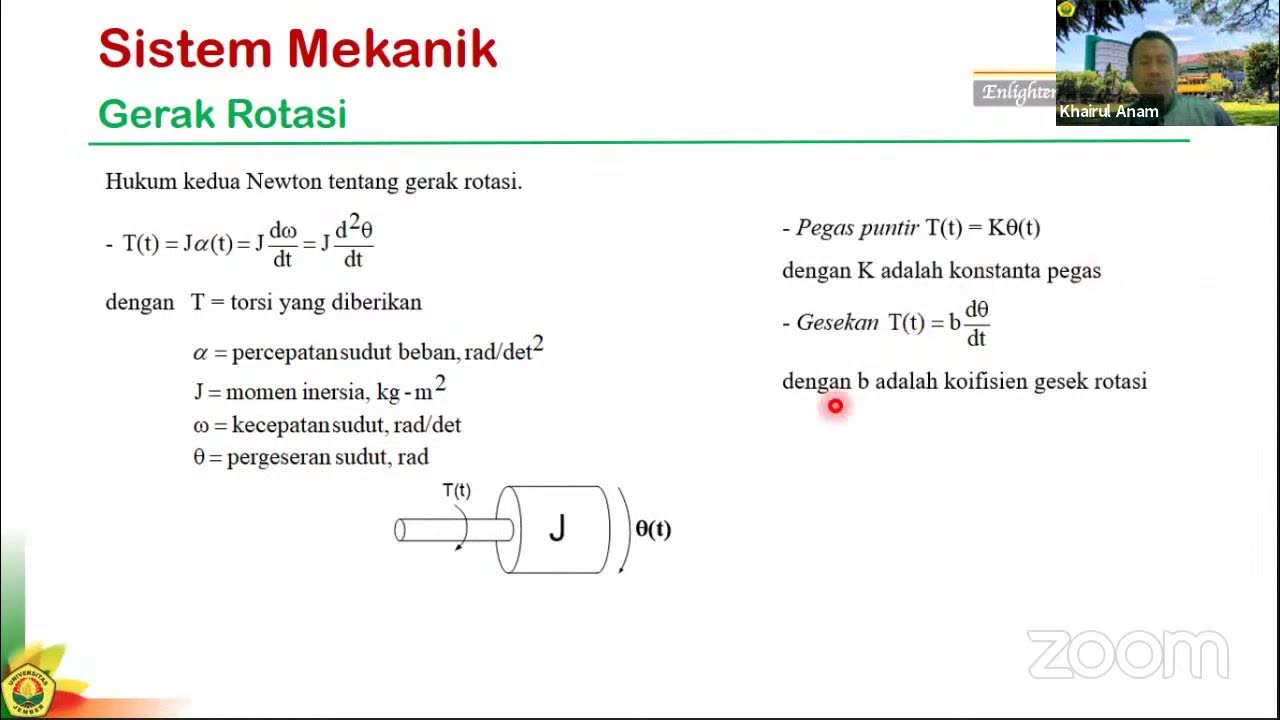RPL 12 System Modeling
Summary
TLDRThis video provides an introduction to system modeling, exploring various perspectives such as context, interaction, structure, and behavior models. It discusses the significance of modeling in software engineering and its role in system development. The video delves into the utility of tools like UML for visualizing and analyzing systems from multiple angles, including how systems interact with their environment, how processes flow, and how data or events trigger system responses. The video also touches on Model-Driven Engineering (MDE), highlighting how graphical models can generate executable code for efficient software development.
Takeaways
- 😀 System modeling helps create abstract representations of existing or proposed systems to improve software development.
- 😀 There are four primary perspectives in system modeling: context, interaction, structural, and behavioral.
- 😀 Context modeling illustrates the operational environment of a system, focusing on system boundaries and its interactions with other systems.
- 😀 Interaction modeling, such as use case and sequence diagrams, models the interactions between the system and external actors.
- 😀 Structural modeling represents the system's internal components, such as classes and their relationships, often using class diagrams.
- 😀 Behavioral modeling depicts how a system responds to events or data, such as with state machine diagrams or event modeling.
- 😀 Graphical models are crucial for simplifying complex systems and making them easier to understand and communicate.
- 😀 UML (Unified Modeling Language) offers various diagram types (e.g., use case, activity, sequence, and class diagrams) for different system modeling perspectives.
- 😀 Model-Driven Engineering (MDE) allows direct conversion of models into executable code, improving development efficiency and reducing manual coding.
- 😀 Tools in MDE can automate the generation of database schemas, class structures, and executable code from graphical models, streamlining the software development process.
Q & A
What is system modeling?
-System modeling is the process of creating an abstract representation of a system. It involves illustrating various aspects of a system, such as its context, interactions, structure, and behavior, which are essential for analyzing and developing software systems.
Why are multiple models necessary in system modeling?
-Multiple models are necessary because different perspectives are required to fully capture the complexity of a system. For example, in UML (Unified Modeling Language), there are different diagrams like use case, class, activity, and sequence diagrams, each serving a specific purpose to model a distinct aspect of the system.
What are the four main perspectives in system modeling?
-The four main perspectives in system modeling are: 1) Context model - illustrates the operational context of a system. 2) Interaction model - depicts how the system interacts with external entities. 3) Structural model - represents the structure of the system. 4) Behavioral model - shows how the system reacts to events or actions.
How does the context model function in system modeling?
-The context model defines the system boundary, showing what is included in the system and what is external. It highlights the relationship between the system and its environment, including other systems it interacts with. For example, a context diagram in a system could illustrate how a 'Minecraft' system interacts with other systems like 'Healthcare Statistics System.'
What is the purpose of the interaction model?
-The interaction model is used to depict how the system interacts with external entities or other systems. It typically includes diagrams such as use case diagrams, which illustrate the interactions between actors and the system, and sequence diagrams, which model the specific order of interactions within the system.
What is the difference between use case diagrams and sequence diagrams?
-Use case diagrams focus on the high-level interactions between actors (users or systems) and the system, highlighting the system's functionality. Sequence diagrams, on the other hand, describe the specific sequence of interactions over time, showing how data or actions flow between actors and system components.
What does the structural model in system modeling represent?
-The structural model represents the internal structure of the system, including components, classes, and relationships. It often uses class diagrams to show how different classes interact with each other through attributes, methods, and associations. These diagrams are fundamental in object-oriented programming.
What is the role of behavioral models in system modeling?
-Behavioral models are used to depict how the system behaves in response to different events. This could involve data-driven behavior, where the flow of data is modeled, or event-driven behavior, where the system's responses to specific events are illustrated. Diagrams like state charts or activity diagrams are often used in behavioral modeling.
What is Model-Driven Engineering (MDE)?
-Model-Driven Engineering (MDE) is an approach to software development that relies on models as the primary means of design and development. In MDE, diagrams or models are created first, and then these models are used to automatically generate code or other artifacts, making the development process more efficient and less error-prone.
How does UML fit into system modeling?
-UML (Unified Modeling Language) is a standardized set of diagrams used in system modeling. It provides various diagrams like use case, class, activity, and sequence diagrams, each serving to model different aspects of the system. UML helps in visualizing, specifying, constructing, and documenting the components of a system.
Outlines

هذا القسم متوفر فقط للمشتركين. يرجى الترقية للوصول إلى هذه الميزة.
قم بالترقية الآنMindmap

هذا القسم متوفر فقط للمشتركين. يرجى الترقية للوصول إلى هذه الميزة.
قم بالترقية الآنKeywords

هذا القسم متوفر فقط للمشتركين. يرجى الترقية للوصول إلى هذه الميزة.
قم بالترقية الآنHighlights

هذا القسم متوفر فقط للمشتركين. يرجى الترقية للوصول إلى هذه الميزة.
قم بالترقية الآنTranscripts

هذا القسم متوفر فقط للمشتركين. يرجى الترقية للوصول إلى هذه الميزة.
قم بالترقية الآنتصفح المزيد من مقاطع الفيديو ذات الصلة
5.0 / 5 (0 votes)






